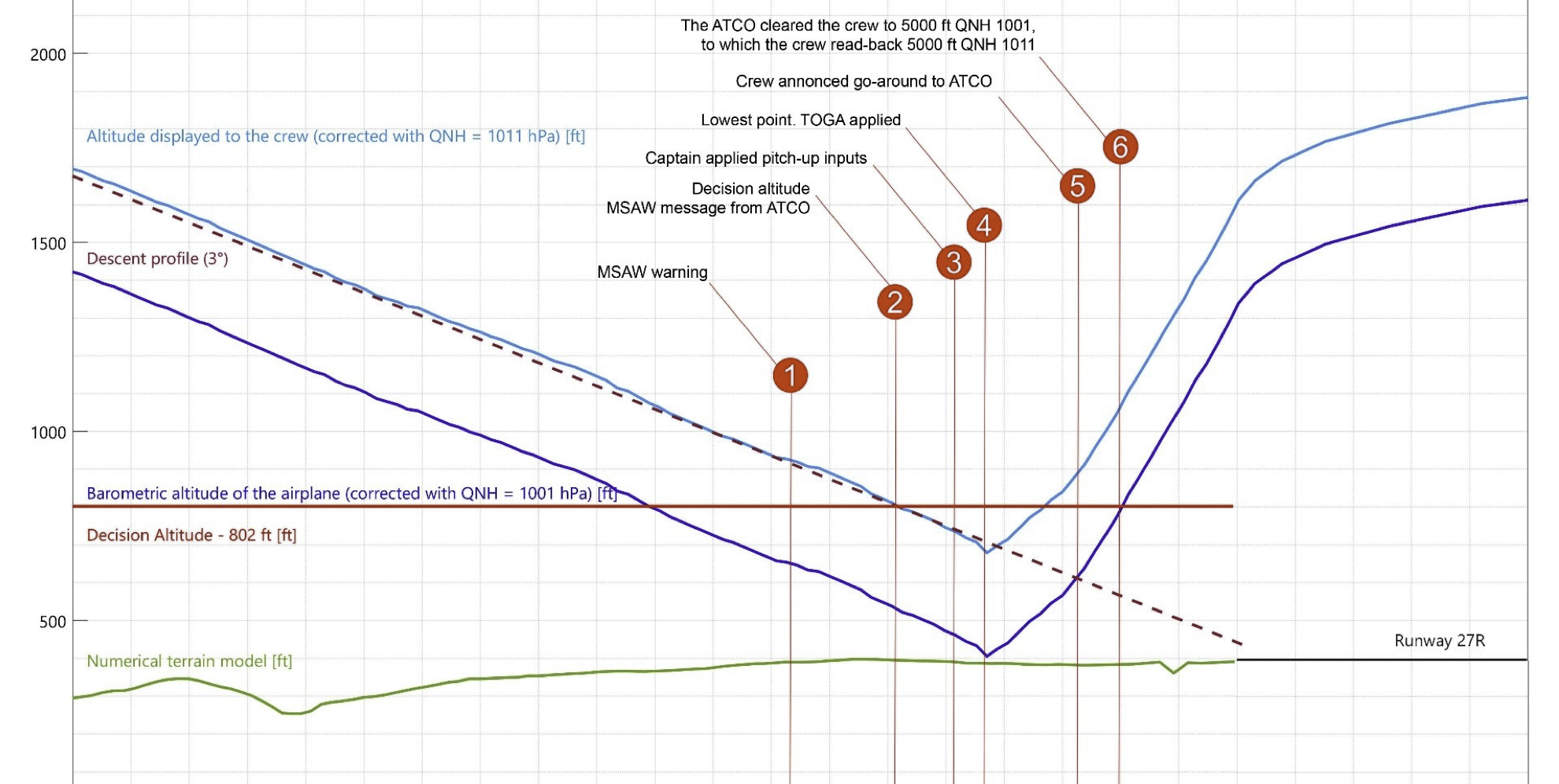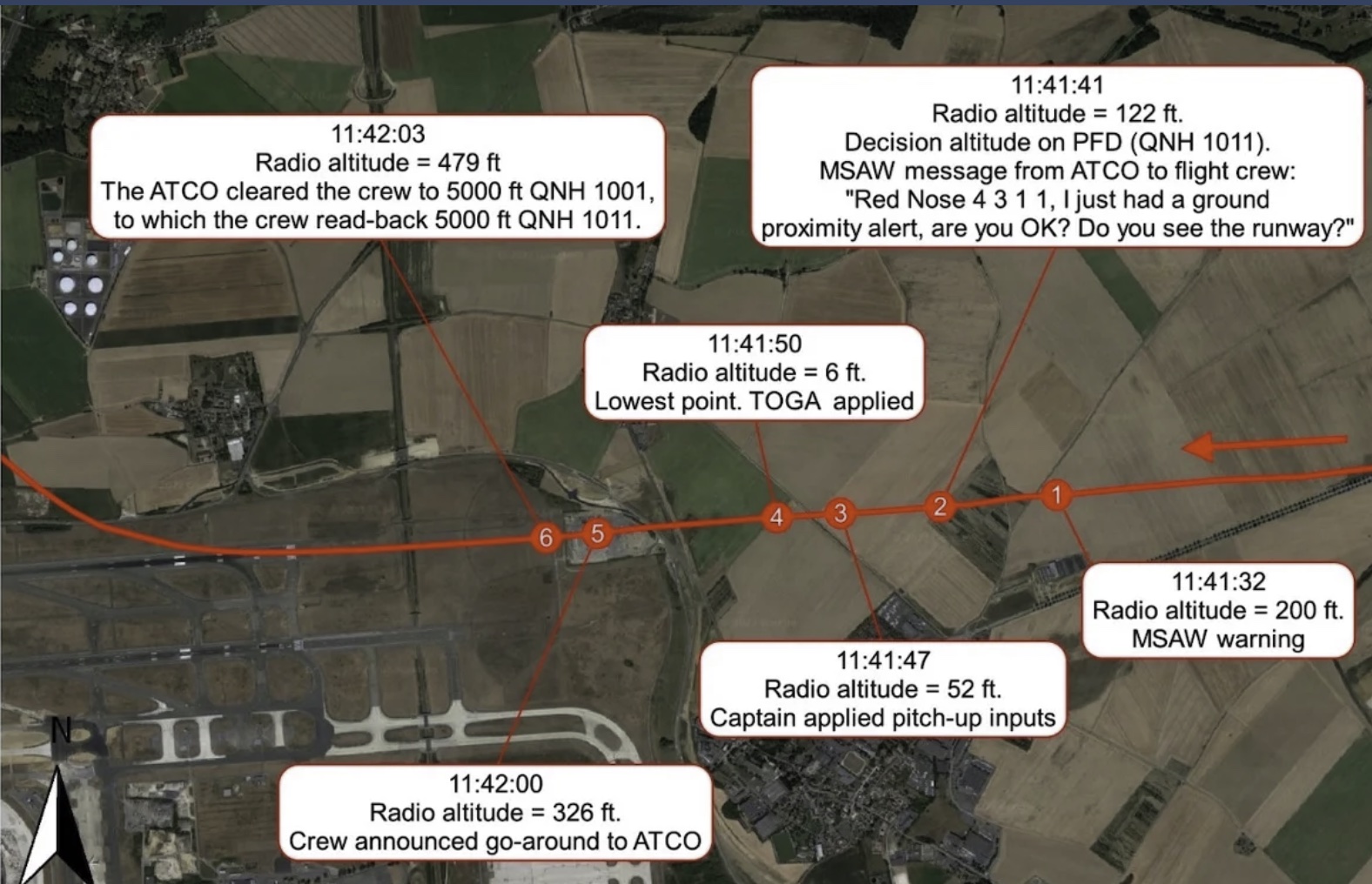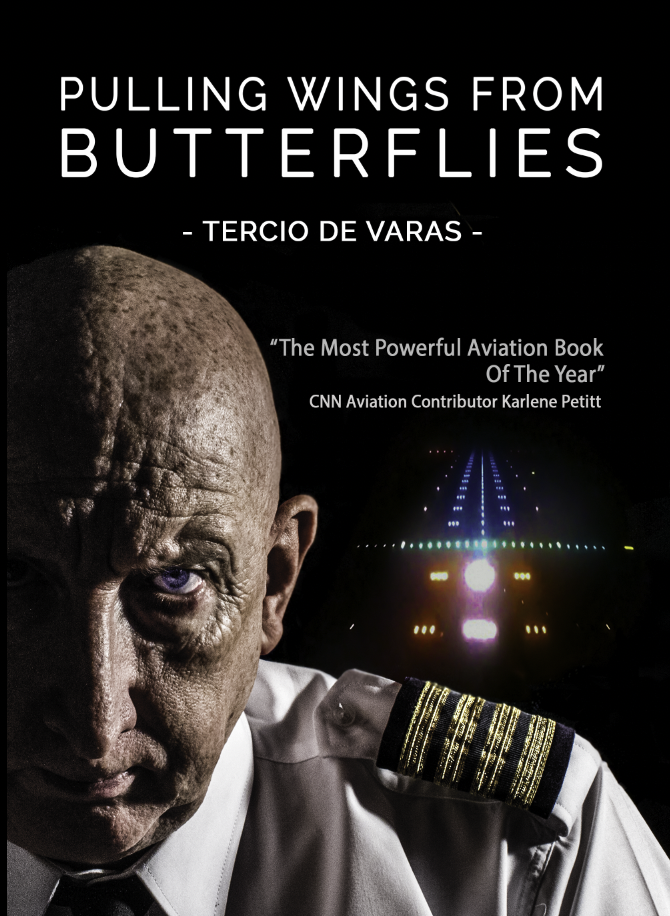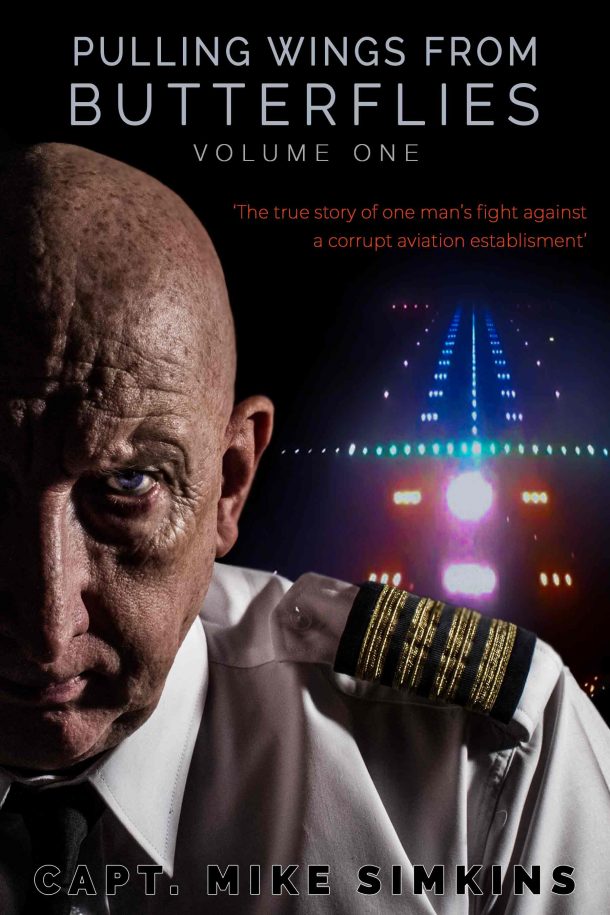AIRBUS WITHIN 6FT OF DISASTER AT PARIS CDG AKA – Common aeronautical language …Part DEUX
‘FRENCH ATC GIVE WRONG PRESSURE SETTING.’
On May 23rd 2022, an Airbus 320, ( the flight was operated by Maltese/Lithuanian carrier Airhub Airlines on an ACMI lease) flying from Stockholm, with one hundred and seventy-two passengers on board, was cleared by the Paris Charles de Gaulle controller to commence an approach to runway 27 right.
The clearance was for an RNP approach. This was due to the ILS not operating. Unlike an ILS approach, where the landing aid is ground-based, an RNP approach utilises the aircraft’s own inbuilt systems.
A significant issue with an RNP approach is that it is vital that the correct pressure setting is provided to the pilots by ATC. If the wrong pressure is given, the aircraft will be at the wrong altitude at any given point on the final approach.
This is precisely what happened on May 23rd.
The following is the transcript from the ATC recordings. Note French ATC gives the wrong pressure setting repeatedly.
At 11:32:24, on approach to CDG, the controller instructed the pilots to descend to 6,000ft with an incorrect QNH (1011 instead of 1001 valid at the time5), “Red Nose 4 3 1 1, descend … descend 6,000 ft, 1 0 1 1.”
At 11:34:28, she instructed the crew to descend to 5,000 ft and repeated the incorrect QNH, “Red Nose 4 3 1 1, descend 5,000 ft, 1 0 1 1, cleared full RNP 2 7 R.”
At 11:35:37, the same controller instructed an easyJet flight crew to descend to 5,000 ft with the same incorrect QNH, “Easy 7 5 Mike Alpha direct Papa Golf 6 5 0 … and descend 5,000 ft 1 0 1 1,
So, why is there an issue with being given the wrong pressure setting?
The QNH (air pressure) given to the flight crew differed by 10 hPa from the correct QNH. This led to an approach that, as the above image shows, was around 280 ft below the correct and safe descent profile. Therefore, when the crew transferred to the tower frequency, as per standard procedure, the controller gave the landing clearance without giving them the QNH value.
The failure of the French ATC to provide the correct pressure setting began a series of events that resulted in the airbus descending to 6ft above the ground, nearly a mile before the runway threshold.
As the often quoted ‘swiss cheese’ model confirms, there were numerous failures that all ‘lined up’. However, dispite these failures being highlighted in the French report, the inital, ‘big hole’ of two languages being used at a major airport was not addressed.
So how did ATC’s use of French at CDG significantly impact yet another near-disaster?
‘FRENCH ATC GIVE CORRECT QNH TO AIR FRANCE’
Moments after giving the aircraft the wrong pressure setting, the French controller, in French, gave the correct pressure to an Air France aircraft.
At 11:36:04, the ATC instructed an Air France flight crew, in French, to descend to 5,000 ft, with the correct QNH 1001. The Air France crew read back with the correct QNH 1001.
Now, consider the following. If that transmission by ATC had been given in English and the Air France had replied in English, would that not have given the Airbus crew an opportunity to realise the controller had, but for 6ft, made a fatal mistake?
Given the seriouness of the near tragedy, it would be reasonable for the recently published investigation into the incident by the French accident investigation organisation BEA to highlight this simple yet highly effective measure to allow pilots a crucial opportunity to realise if a mistake has been made by ATC.?
Given my experience on the issue since 1998 I was not surprised that the report makes zero reference to the fact that two languages continue to be used at CDG.
THE TICKING TIME BOMB AT PARIS CGD WITHIN SECONDS OF DETONATING!
In January this year, I wrote an article in response to ICAO (International Civil Aviation Authority) publishing the following statement;
“For pilots and air traffic controllers to communicate clearly and efficiently around the world, a universal aviation language had to be established.”
Those who have read ‘Pulling Wings From Butterflies,’ will already be aware of two incidents at Paris Charles de Gaulle airport in which I was involved. The events in 1998 resulted in my prophetic warning to the regulators relating to the insistence of French ATC using French when speaking to French registered aircraft. I stated, “a major incident is waiting to happen if the French ATC continue to be constrained by Ministerial Order No 7. “In the book, I refer to the situation as follows;
“The whole situation is a little like knowing that there is a bomb that has been placed at CDGl Airport. Not only do we know that there is a bomb, but we know exactly where the bomb has been placed. The only things we don’t know is, how big the bomb is, and when it will go off. That, however, is immaterial because if you move or defuse the bomb before it explodes, it will not kill anyone. The French and the European air traffic agencies don’t want to move or defuse this particular bomb. The bomb is still ticking at CDG airport.”
The European regulators ignored the direct warning. One year later, a tragic accident occurred at CDG due to a mixture of French and English being used at one of the busiest airports in the world.
In May 2022, that metaphorical ‘Bomb’ came within six feet, i.e. seconds, from detonating yet again and killing 172 passengers and six crew aboard an “Air Sweden’ Airbus 320 on final approach into Paris Charles De Gaul.
‘SO WHAT IS EASA DOING ABOUT IT?’
Following my blog article in January 2022, the following conversation on Linkedin followed between myself and EASA’s “Head of Safety Promotions”
MS – John, can you confirm what EASA are doing about an issue ICAO are deeply concerned with (but apparently can’t do anything about). I predicted in a published article in 1998 it was only a matter of time before there would be a fatal crash at CDG Paris. This due to French being spoken on RT between French ATC and French reg aircraft. A year later the inevitable happened. A French aircraft was cleared to line up and take off (in French) and an English aircraft was cleared to line up (in English). As I stated in the article. This is a case of national pride taking precedence over flight safety. Given the response I have had to that section in the book, I and many other crew will be very interested to know what EASA intend to do. As I say in the book “French is still used at CDG. The bomb is still sitting there ticking, tick, tock.” BTW Before anyone accuses me of attempting to use postings to sell a book I ask, when you have exhausted all other means of communicating series safety lapses to the relevant safety authorities , can you suggest another way of bringing the issues into the public domain?
JF – Indeed, the topic of language proficiency is identified as Safety Issue SI-0054 on Page 48 in Volume III of the EPAS. There is then a section of Volume II (Actions) that covers this from Page 29 onwards. There is a Safety Promotion action as well as one for Member States.
The rules are expanding to various ramp staff as well as flight crew so this should help to maximise situational awareness. I have no specific information on implmenetation in specific countries but this is part of the monitoring of the actions and analysis of the effectiveness of the actions.
MS – Thanks for the info John. Has the safety promotion action been ‘actioned’ at Paris CDG i.e. are they now conducting, in the interests of passenger and crews safety. all ATC transmissions in English. If you do not personally know can you please inquire at EASA with someone who will. Many thanks in advance.
JF – I will check with the analysis team and see what I can find out.
MS – Many thanks John. I look forward to the reply.
A month later I still had no reply
MS – Any news back from the Analysis team. What a state of affairs when even a French controller has been raising the issue.!
JF – From a rules perspective SERA.14015 has the requirement for English at all Airports with over 50,000 movements. The situation has more recently also been strengthend with new rules on English for Apron Services as well to further increase situational awareness for all on the airport.
From a data perspective, the most recent Annual Safety Review hasn’t seen language issues identified within the top safety issues from the analysis of accidents/ serious incidents (Table 7 on Page 54 or Annual Safety Review 2020 is where you can find the Safety Risk Portfolio for large aeroplanes in commercial ops). The main task of the Safety Review is to identify the top risks so that they are addressed in the EPAS.
As I mentioned earlier, we have the promotion actions in EPAS to promote the reason for English language use and proficiency with any sceptics out there. As Jean-François De Coster refers to, there is still work to do to ensure sufficient standards of English are used when parties communicate with each other. We have language proficiency experts from industry working with us on this task with the goal of making things as effective as possible in the real world.
MS – Thank you for the reply… so can you confirm that the Ministerial Order therefore is now not to be adhered to “MINISTERIAL ORDER of 7th SEPTEMBER 1984 relating to radiotelephony procedures for the use of general air traffic. It states in particular (in paragraph 2.4) that French must, except in special case, be used between French flying personnel and French ground stations.”
Many thanks
The reply says everything about the culture and ineffectivness of EASA
JF – Sorry I’m not permitted to give legal interpretations to something like that. You would need to use the contact us part of the EASA website for something like that I’m afraid.
MS – “You would need to use the contact us part of the EASA website for something like that I’m afraid.”
And that John is EXACTLY the issue with both this matter, falsification of duty times (as per the VERY recent Qatar Airways story re falsified duty times and fatigue). I DID go through the proper channels. NOTHING was done apart from attempting to quash the issue. I would respectfully suggest the fact that you are the head of “safety promotion” at EASA and you suggest “or something like that”…You must agree the “optics” does not look good.
Thats the reason I eventually wrote the book (which yourself have read). Therefore the current Regulatory system DOES NOT WORK. Therefore can you, as Head of Safety Promotions please arrange a meeting with whoever you deem to be the individual at EASA who specifically deals with flagrant breaches of the ANO and or EU ops. As you will be aware, a breach of such documents is a criminal act. I shall be available with ALL supporting documentation. Thank you in advance.
JF – As I suggested some time ago, the best thing is to use the EASA Confidential Safety Reporting process at the link below. This is the best way to raise something like this to the highest levels of the Agency.
MS – John…it clearly is not the best way..unless the intention is to deflect serious safety issues as my case would support. I note that the last comments appear to have been removed.
JF – Genuinely, the EASA confidential reporting process is designed so that aviation personnel can report, and I quote from the Web page “alleged malpractices and irregularities to the European Union Aviation Safety Agency in the field of aviation safety”.
‘CuRRENT SITUATION?’
- French is still being used at CDG
- I have not been invited to meet EASA and provide the details first hand.
- As a result, 178 people were within 6ft of loosing their lives when, if ATC had used English when giving the correct pressure setting to the Air France aircraft, the Airbus aircraft might have realised the CDG controller had made the near fatal mistake.
- The clock keeps ticking Tick Tock, Tick Tock
- The BEA report can be found here
BUY DIRECT FOR SIGNED BOOKS
EBOOK £5.99
PAPERBACK £9.99
9 in stock
HARDBACK £17.99
5 in stock
HARDBACK BACK IN STOCK
Due to repeated demand, ‘Pulling Wings from Butterflies – Tercio De Varas’ has been reprinted in hardback.
‘Pulling Wings from Butterflies’ tells the true story the aviation establishment DON”T want telling; those dreaming of becoming pilots and cabin crew WON”T want to hear; and passengers NEED to know.
Purchase direct from the website for a signed copy.
5 in stock
part one - Tercio de varas
The first book in the trilogy begins by following the unique journey of Captain Mike Simkins from touring Europe as a drummer and performing with some of the most prominent musical artists of the late ’80s, to becoming a commander on the world’s most advanced passenger aircraft.
Ultimately, the wings were pulled from the butterfly of a dream career when, Mike stood alone to confront a multibillion-dollar aviation establishment when he refused to place profit before safety.
PArt TWO - Tercio de banderillas
Will the pilot union BALPA and the regulator, the CAA, support a legal case of major significance to the safety of airline passengers and crew?
What’s the reason unions and regulators allow airlines to have ‘Cash Cadet’ pilots with zero jet experience pay them to fly fare-paying passengers?
Why do pilots agree to fly when dangerously fatigued that directly places not only themselves but their passengers and crews in danger?
What was the answer from the Thomas Cook CEO to the question ‘did the company put profit before safety’ in relation to two children’s death in Corfu?
How will a pilot with zero legal experience confront a multimillion-pound multinational at trial?
part three - Tercio de MUERTE
Crews admit that they are knowingly flying duties in the full expectation they will suffer fatigue. They are committing these criminal acts due to the “Bullying” culture at one of the UK’s biggest airlines.
The CAA is provided with irrefutable proof that duty times are knowingly falsified to make it appear they conformed with strictly laid down maximum times and that pilots are flying at the equivalent effectiveness of a drunk driver. Their response? ‘Get over it.’ .







